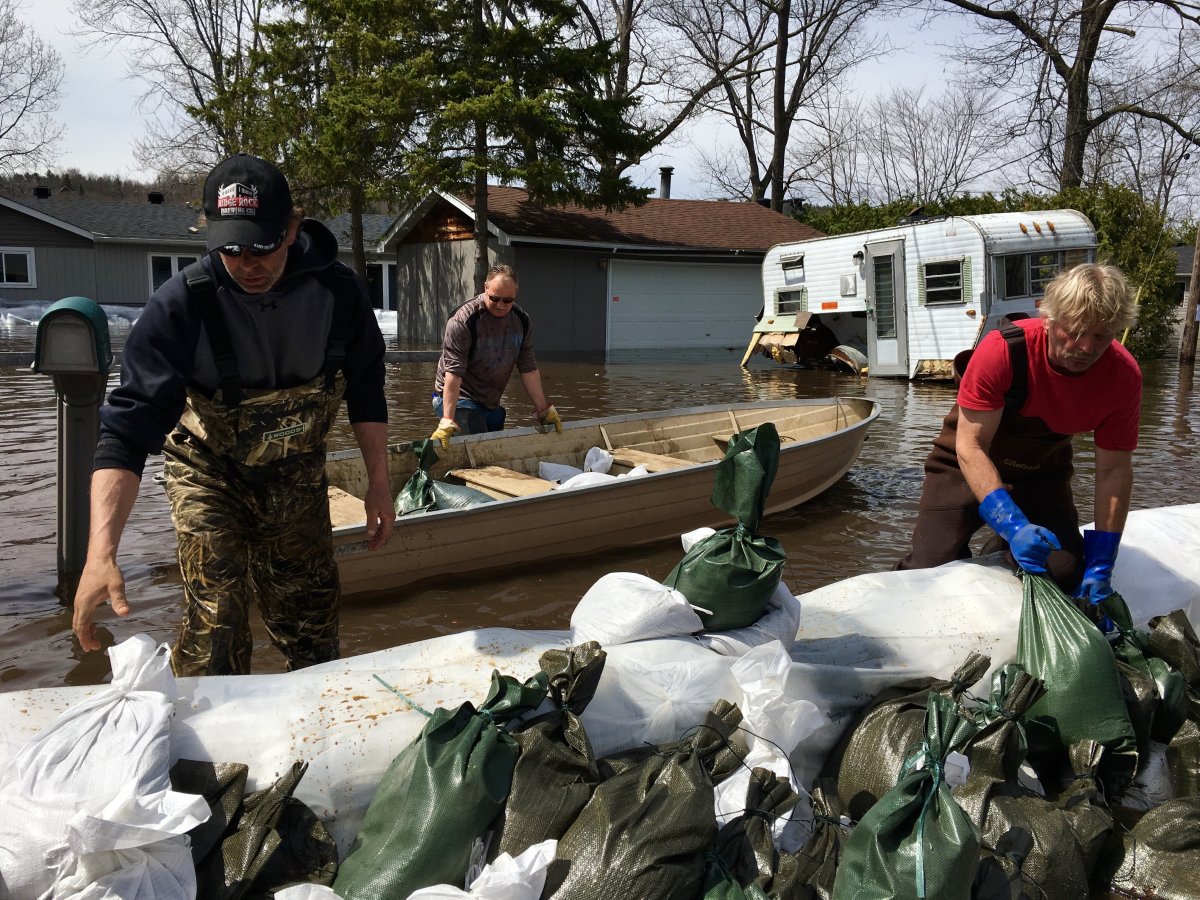With recent forecasts projecting the Ottawa River will rise once again by Friday, senior city staff are urging residents in Ottawa’s flood zones to “keep their sandbag walls up.”

Water levels in and around Ottawa crested late last week and have since been dropping, but with the continuing snowmelt and more rain expected on Thursday and Friday, the communities affected by the record-breaking flooding aren’t out of the woods yet, officials at city hall warned on Wednesday.
“The city anticipates water levels will rise again slightly between now and Friday but below the peaks that were reached last week,” Anthony Di Monte, general manager of emergency and protective services, said during city council’s meeting.
“The sandbags will continue to protect their homes.”
The areas in Ottawa affected most by this spring’s floods are located in West Carleton and Britannia in the west end and Cumberland in the east end.
City manager Steve Kanellakos told councillors the municipality is still “actively” monitoring variables that can affect the height of the river around the national capital — namely the weather, the melting snowpack, and the amount of water that dams along the Ottawa River watershed have to release as they reach capacity.
- Premier Moe responds to Trudeau’s ‘good luck with that’ comment
- Drumheller hoping to break record for ‘largest gathering of people dressed as dinosaurs’
- As Canada’s tax deadline nears, what happens if you don’t file your return?
- Planning a summer trip to Quebec’s Îles-de-la-Madeleine? You’ll have to pay up

Earlier this week, the Otto Holden Dam — about 300 kilometres upstream from Ottawa — released about two feet of water, prompting the neighbouring Town of Mattawa to declare a state of emergency.
Asked whether he expects this release to affect the river levels in Ottawa, Di Monte said the national capital won’t be as impacted as the communities located closer to the dam.
Most of the dams along the Ottawa River are “at their maximum right now” and will have to release some water eventually, Di Monte said.
Mayor Jim Watson declared a state of emergency due to the flooding on April 25. The city will remain under a state of emergency for the time being so it can “provide the necessary aid to the affected areas,” Di Monte said.
Canadian Armed Forces remain on ‘standby,’ city says
That aid includes support from the Canadian Armed Forces, who were deployed to help with flood relief operations like sandbagging the day after Watson declared a state of emergency.
Asked how long the military will stick around to support the city, Di Monte suggested troops will remain on standby until the mayor officially lifts the state of emergency.

The regular forces deployed from Petawawa have returned to the base but are on “24-hour standby notice,” Di Monte told reporters. A group of reservists remain stationed at the Connaught Ranges and “are ready to intervene rapidly” if the city needs help, he added.
Staff told councillors that a total of about 800 troops were deployed to Ottawa during the peak period of the floods.
“Their assistance cannot be overstated,” Di Monte told councillors.
He said the military played an “integral role” in protecting some of the city’s infrastructure, like the Britannia berm, and ensuring the municipality maintained “critical access” to certain roads, including the roadway to the water purification plant in Britannia.
The city says its three incident command posts and the community support centre in Constance Bay will remain open until further notice.
City exploring what to do with 1M sandbags
While it keeps an eye on the water levels this week, Kanellakos said the city is also “preparing full-on” for the next phase of flood operations: recovery and remediation work.
That includes figuring out how to dispose of the 1.5 million sandbags filled and distributed by the army and about 15,000 community volunteers over the last several weeks.
Kevin Wylie, head of public works and environmental services, said the city’s “robust recovery task force” — which includes representatives from the public health agency — is looking at “very innovating ways of reusing that sand.”

City staff said last week that the municipality took the sandbags used during the floods in 2017 and used them to cover full sections of garbage at the Trail Road waste management facility. But Wylie said that’s the “last thing” the city wants to do this time around.
West Carleton-March Coun. Eli El-Chantiry expressed concern that the sandbags pose a health risk — they’re contaminated because of their contact with flood waters — and asked staff to ensure there’s no confusion over how to deal with them in the weeks ahead.
“I’d like to see our officials working with the public health to make sure we have a consistent message,” the councillor said.




Comments